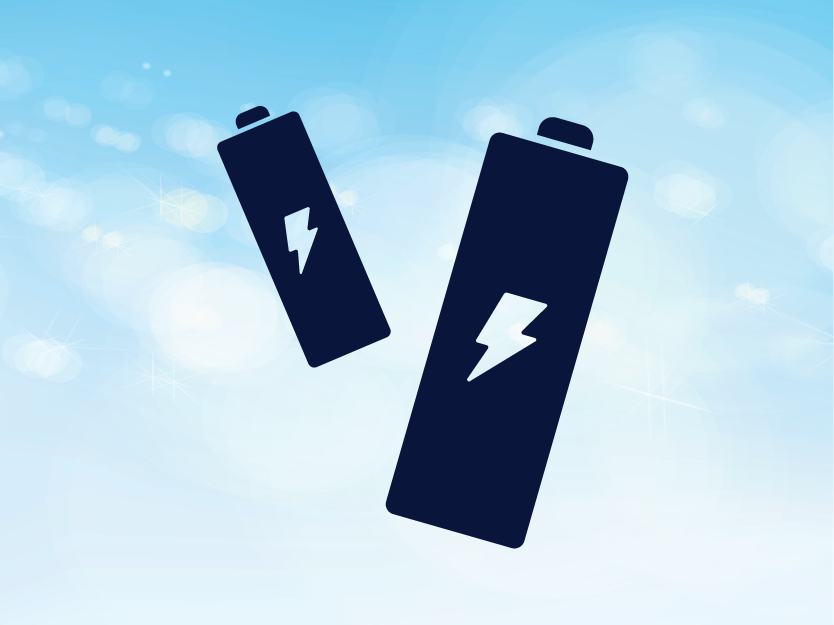Recycling Education

Some things just don’t belong in your recycling. Sort it out!
Recycling right keeps both staff and the system safe. Hazardous items like batteries and propane tanks put workers at risk and should never go in your blue cart. Also, some items can get caught in the machinery, causing serious damage to the equipment and disrupting the recycling process. A little sorting goes a long way. Keep your blue bin free of contamination and sort it out!
 Batteries don’t belongBatteries don’t belong in your recycling (or your green cart or garbage for that matter) – they can spark fires! Instead, drop them off safely at the Material Recovery Centre (open 7 days a week) or a designated battery drop-off center. |  Food waste belongs in your green cartYour pizza crust’s final destination? Not your recycling! Food waste, including leftovers and scraps, belong in your green cart. If you don’t have organics collection where you live, make sure you toss food waste in the garbage and not your blue bin. |
 Propane tanks are bad newsPropane tanks are a hazardous item. They don’t belong in any of your carts as they pose a serious safety hazard. Instead of creating a safety risk, drop them off for free at the Material Recovery Centre (open 7 days a week). |  Diapers aren't recyclableDiapers definitely don’t belong in your blue bin! Whether used or unused, diapers are not recyclable. Please make sure to only discard all diapers in the garbage. |
 Pet waste is trashYour pet’s business is our business… and it belongs in the black cart. Pet waste is trash - literally! It doesn’t belong in your green cart or blue bin. Always bag it and toss it in the garbage to keep our recycling and compost clean. |  Some electronics can be recycled – but not in your blue bin!Electronics can be recycled, but not in your blue bin. Take them to a SARCAN depot or to the Material Recovery Centre to make sure they’re properly processed. And not all electronics can be recycled – be sure to ask the Waste Wizard if you're not sure! |
Now that you’re a sorting pro, test your knowledge and you could win a Blackstone Grill!
Frequently Asked Questions
Can I recycle other kinds of batteries?
Single-use and rechargeable batteries weighing less than 5 kg can be dropped off at the MRC for free. These include:
- Small Single-use and rechargeable batteries for remotes, gadgets, smoke detectors and toys (e.g. AAA, AA, A, C, D, 9V, 6V, etc.). Please tape contact points.
- Small coin shaped ‘button batteries’ used in watches, hearing aids, key fobs, birthday cards etc. Please tape the contact points.
- Ebike, scooter and electric lawnmower batteries under 5 kg
- Cordless power tool batteries (e.g. Lithium-ion batteries). Please tape the contact points.
- Computer and camera batteries
Lead acid batteries can be dropped off at the MRC at a different station.
Electric vehicle or lawnmower batteries over 5 kg should be taken back to the dealership for recycling.
The City has partnered with Call2Recycle to recycle the batteries. For more information visit Call2Recycle.
What is household hazardous waste and when can I drop it off?
Household Hazardous Waste (HHW) includes unused or leftover household products that contain harmful chemicals. These materials can post a risk to people, animals, soil and water. They are often labelled CAUTHIN, WARNING, CORROSIVE, EXPLOSIVE, FLAMMABLE, POISONOUS or TOXIC.
Common HHW includes:
- Aerosol cans
- Propane cylinders
- Light bulbs
- Yard and garden chemicals
HHW Drop-Off can be dropped off safely every Wednesday from 8:30 a.m. to 4:00 p.m. from beginning May 7, 2025 at the Material Recovery Centre, located at 42 Valley Road.
Why can’t we put pet waste in the green cart if it’s organic?
While other municipalities have chosen to accept pet waste in their green cart programs, the City made the decision not to include them at this time. Pet waste is a challenging material to accept as the finished compost may not meet the safety standards outlined. Pet waste can also be challenging to process because it is often bagged, which can lead to plastic contamination if the bags are not BPI-certified compostable.
Once the City’s organics processing facility is operational, additional materials may be tested for suitability and safety.
Why aren’t diapers recyclable?
Diapers, whether clean or used, cannot be recycled. They are made of multiple materials that cannot be separated during processing. Used diapers also pose a health risk and must be disposed of in the garbage.
How do I know which electronics can be recycled?
Electronics from the following categories can be recycled:
- Computers and computer hardware (e.g. printers, monitors, tablets hard drives, peripherals etc.)
- Audio and visual systems (e.g. answering machines, radios, stereo and video gaming systems)
- Electronic office copiers (e.g. photocopiers, scanners)
- Countertop microwave ovens
- Baby monitors, E-book readers, GPS Systems, tablets
The following types of electronics are not accepted for recycling:
- Cell phones, pagers, baby monitors
- TVs built into appliances
- 3D Glasses
- Point of sale terminals
- Servers for data storage
Why are some electronics recyclable and others aren’t?
The City works with the Electronic Products Recycling Association (EPRA), which determines what can be accepted based on processing capabilities and available recycling markets.
For more information on the EPRA, click here.
Where and when can I recycle propane tanks?
Propane tanks are accepted at the Material Recovery Centre daily. You don’t need to wait for Household Hazardous Waste drop-off days to recycle this item.
Interested in more waste education?
Sign up for Waste Wize, the City of Saskatoon's Waste Newsletter! Subscribe now for program updates, recycling tips, upcoming events and more.

